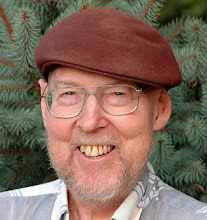Leading a nonprofit organization is a delicate balance of personalities and performance, values and vulnerability, commitment and creativity, power and humility.
One day in late December 2006 when I was thinking about how being a humble leader can help an organization thrive, I rolled into a gallery at the Chicago Cultural Center located in a beautiful old building in downtown Chicago.
One piece in the gallery in particular, a video playing on a small screen, drew my attention. In the video a young artist, Victoria McOmie, dressed in a stocking cap and coat, walked across brown, wintry-looking grass and approached an abandoned chicken coop on the Ragdale Foundation grounds.
The Ragdale Foundation, a nonprofit organization, provides inexpensive residencies for artists and writers in an old mansion north of Chicago. At any one time there are 12 artists and writers living and working there. The exhibit, to celebrate Ragdale’s 30th anniversary, featured pieces done by artists while in residence at Ragdale.
McOmie had collected pieces of wood and plants and created an installation by arranging them in the coop in a pattern based on balance. The camera follows her inside and pans the collection of material balanced in the coop. Then the camera focuses on her as she crouches next to a long, stem of prairie tall grass balanced on an unseen object. Gently she blows on the head of the tall grass--you can see her breath--and the tall grass gently moves away from her, then back again; she blows again and the tall grass moves away, then back. I sat mesmerized; never once did she blow too hard and disrupt the delicate balance of the long stem.
McOmie’s installation seemed to me to be a perfect metaphor for leading a nonprofit. McComia created a work of art out of an abandoned chicken coop, dried weeds, fallen branches, and broken bits of wood. Nonprofits often work with people who have been abandoned, neglected, and are on the margins of society.
Yet nonprofit leaders, like McOmie, have the ability to see potential in otherwise overlooked people. And they create organizations that thrive on a delicate balance between clientele, staff, board, donors, funders, and regulators, and the community
And when it’s done well it’s a thing of beauty.
Wisdom for the week: Humble hierarchy leaders create space and balance in which the unlikeliest of folks thrive.
Fare thee well, Rich


No comments:
Post a Comment